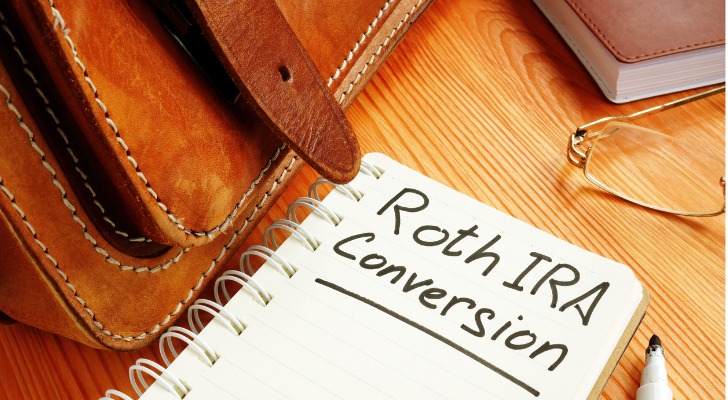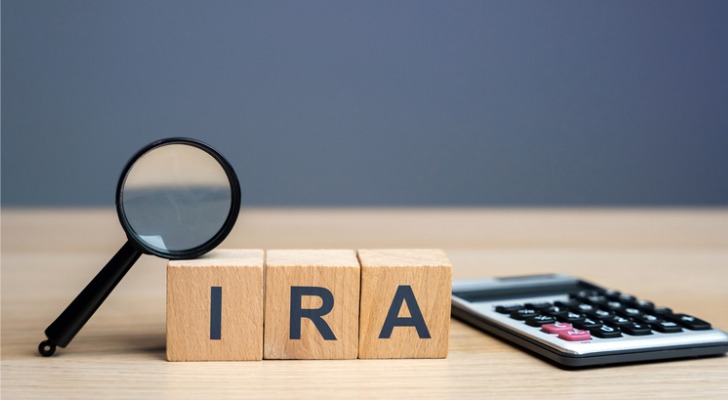

Individual retirement accounts (IRAs) are a popular and common way for Americans to save for retirement. However, not everyone is aware of a crucial component of IRA regulations called the “aggregation rule.” Essentially, if you have multiple IRAs, this rule treats them as a single IRA for tax purposes. This can be especially important to understand when performing Roth conversions or planning for required minimum distributions. A financial advisor can help you manage your retirement accounts and adhere to this important rule.
The aggregation rule plays a crucial role in managing tax treatment related to retirement savings. The Internal Revenue Service stipulates that all of your IRA accounts (except Roth accounts) are treated as a single entity for calculating conversion taxes or minimum distributions. However, the rule doesn’t apply to 401(k)s and other employer-sponsored retirement plans.
To put it simply, when computations for tax savings or distributions are made, the combined value of all your traditional IRA accounts is considered. The rule is designed to prevent individuals from taking advantage of tax strategies that would work if the IRAs were considered separately.

When it comes to a Roth conversion – transforming funds from a traditional IRA into a Roth IRA – the transaction typically has tax implications since the converted money is typically subject to income tax. The aggregation rule can significantly alter the tax impact of this conversion, especially when you’ve made non-deductible contributions to an IRA.
Suppose that you have two IRAs and make non-deductible (after-tax) contributions to one of them with the hope of converting that account into a Roth IRA. The aggregation rule precludes you from converting only the non-deductible contributions. Instead, the IRS considers all of your IRAs as a single unit when you perform a Roth conversion.
For example, imagine you have $40,000 in one IRA and another $10,000 in a separate account that was funded entirely with non-deductible contributions. However, you want to convert the second IRA into a Roth account. This is where the aggregation rule kicks in. The conversion must be done on a proportional or pro rata basis, meaning your tax liability is based on the total value of all of your IRAs, not just the assets you want to convert.
The $10,000 that’s being converted comprises 20% of your overall $50,000 IRA balance (remember, the IRS treats multiple accounts as one). That means only 20% of the conversion would come from your non-deductible IRA and the remaining 80% would come from the pre-tax IRA. As a result, you’d pay taxes on $8,000 of the $10,000 that’s being converted.
Required minimum distributions (RMDs) are the minimum amount you must withdraw from your retirement accounts each year, starting at age 73 (unless you turned 72 before December 31, 2022). The aggregation rule comes into play here as well.
If you have more than one IRA, you’ll calculate a separate RMD for each account. But when it comes time to make these mandated withdrawals, the IRS allows you to combine them and withdraw a lump sum from one account if you choose. Then again, if you prefer to make separate withdrawals from each account, you can do that as well.

It’s essential to clarify that there is no exemption from the aggregation rule per se. However, you can employ strategies to efficiently manage your retirement accounts under the rule. One such strategy is to roll IRA funds into an employer-sponsored plan like a 401(k) (called a reverse rollover), which resides outside the rule’s scope.
Let’s return to the earlier example of the two IRAs worth a combined $50,000. Suppose you’re also enrolled in a workplace retirement plan like a 401(k). If your plan allows it, you could roll the traditional IRA with $40,000 into your 401(k), leaving you with just one IRA. You could then convert the remaining account, worth $10,000 in non-deductible contributions, into a Roth IRA and avoid aggregating altogether. The timing and execution of this strategy can be complex, so make sure to consult a financial advisor before proceeding.
The IRA aggregation rule can have a substantial impact on your retirement savings and tax planning. It’s essential to understand how it works and take steps to mitigate its effects if necessary. Whether you’re considering Roth conversions, RMDs or simply managing your IRA accounts, being well-informed about this rule will help you make more educated financial decisions.
Photo credit: ©iStock.com/sturti, ©iStock.com/designer491, ©iStock.com/Andrii Yalanskyi
Read More About Retirement



More from SmartAsset
SmartAsset Advisors, LLC ("SmartAsset"), a wholly owned subsidiary of Financial Insight Technology, is registered with the U.S. Securities and Exchange Commission as an investment adviser. SmartAsset's services are limited to referring users to third party advisers registered or chartered as fiduciaries ("Adviser(s)") with a regulatory body in the United States that have elected to participate in our matching platform based on information gathered from users through our online questionnaire. SmartAsset receives compensation from Advisers for our services. SmartAsset does not review the ongoing performance of any Adviser, participate in the management of any user's account by an Adviser or provide advice regarding specific investments.
We do not manage client funds or hold custody of assets, we help users connect with relevant financial advisors.
This is not an offer to buy or sell any security or interest. All investing involves risk, including loss of principal. Working with an adviser may come with potential downsides such as payment of fees (which will reduce returns). There are no guarantees that working with an adviser will yield positive returns. The existence of a fiduciary duty does not prevent the rise of potential conflicts of interest.